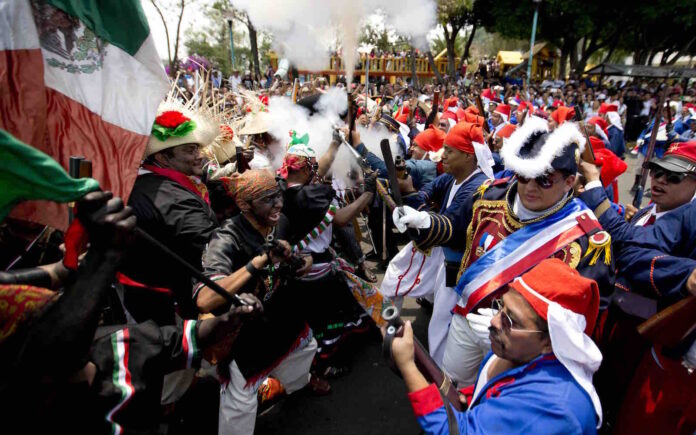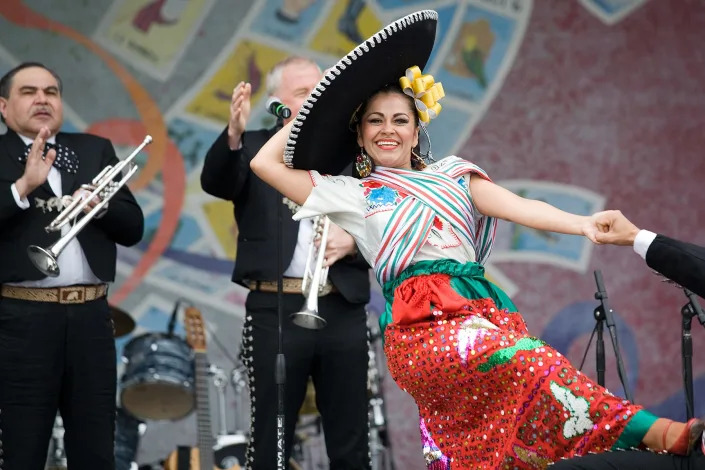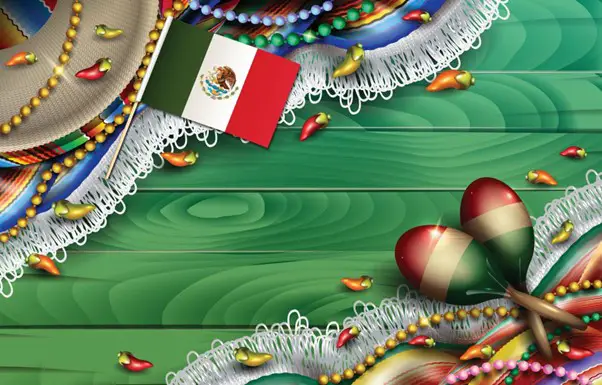
Cinco de Mayo is almost here, and we know many of you are already looking forward to a day of celebrating. But do you know the significance of the day?
Here’s a rundown of Cinco de Mayo basics to make sure you and your pals know what it is — and isn’t — and have all the details on how to acknowledge the day in a respectful way.
What is Cinco de Mayo?
Cinco de Mayo, which translates to the fifth of May and is celebrated on May 5, is a holiday recognizing when the Mexican army claimed victory over France at the Battle of Puebla during the Franco-Mexican War on May 5, 1862, according to History.
After defeating the Spaniards in 1821 and losing the Mexican American War in 1848, Mexico came into conflict with France.
French Emperor Napoleon III sent his troops to Mexico to force President Benito Juárez and the government out of Veracuz so he could claim Mexican territory for himself.
Assuming success was imminent, 6,000 French troops under General Charles Latrille de Lorencez set out to attack Puebla de Los Angeles, a small town in east-central Mexico.
Juárez was able to round up 2,000 loyal men for the cause and sent them to Puebla. Despite being outnumbered, the Mexican soldiers led by General Ignacio Zaragoza were able to hold off the French from daybreak until evening and eventually came out victorious.
This victory boosted the Mexican army’s morale and national pride, resulting in Juárez later declaring May 5 a national holiday once he resumed his presidency.
Cinco de Mayo is not Mexico’s Independence Day

Cinco de Mayo is not to be confused with Mexico’s Independence Day (Día de la Independencia), which is celebrated on Sept. 16th and is the anniversary of the revolutionary priest Miguel Hidalgo y Costilla’s famous “Grito de Dolores” (“Cry of Dolores,” referring to the city of Dolores Hidalgo, Mexico).
The “Grito de Dolores” was a call to arms that led to a declaration of war against the Spanish colonial government in 1810, reports History.
How people celebrate Cinco de Mayo
In the state of Puebla, Cinco de Mayo is celebrated with speeches, parades, and reenactments of the 1862 battle. Most of the rest of the country does not recognize the holiday.
Although margaritas have since become synonymous with Cinco de Mayo, the first celebrations on the anniversary didn’t include margaritas, which weren’t invented until the 1940s, according to the Smithsonian Institution.
In the mid-20th century United States, Cinco de Mayo celebrations were established among Mexican immigrants as a way of encouraging pride in their heritage. Enthusiasm for the holiday among other demographics did not increase until Cinco de Mayo began to focus on the promotion of Mexican alcoholic beverages, according to Britannica.
Critics have observed that U.S. festivities related to Cinco de Mayo tend to promote excessive drinking and perpetuate negative stereotypes of Mexicans.
Despite this, some major celebrations in the U.S. include parades, mariachi music, parties, Mexican folk dancing, and traditional foods like mole poblano and tacos, particularly in areas with large Mexican American populations.

Why is Cinco de Mayo celebrated in the U.S.?
Aside from Mexican American populations wanting to share information about their heritage and celebrate their culture, Cinco de Mayo was widely discussed by Chicano activists in the 1960s.
Chicano activists typically identified with the victory of Indigenous Mexicans over European invaders during the Battle of Puebla, according to History.
Celebrating Cinco de Mayo can be a fun celebration for people of all backgrounds but is important to recognize that commemorating Mexican culture and heritage — the true meaning of the holiday — is very different than culturally appropriating it.
Cultural appropriation in relation to a holiday like Cinco de Mayo includes wearing a sombrero or other Mexican cultural garb in a way that mocks or is a caricature of those with Mexican heritage, mimicking stereotypes of Mexican people, or contributing to prejudice against those of Mexican descent in any way.
If you would like to honor Cinco de Mayo differently this year, consider learning more about traditional Mexican cuisine and trying some out for yourself, supporting local Mexican-American-owned businesses, or attending local cultural events.
Reminder: If you do partake in drinking activities on May 5, do not drive under the influence or get in a vehicle driven by someone under the influence. Rideshare services such as Lyft and Uber are widely available and often offer discounts or emergency rides on holidays, like Cinco de Mayo and New Year’s Eve, where there is a large increase in drinking.
Source: OEM





